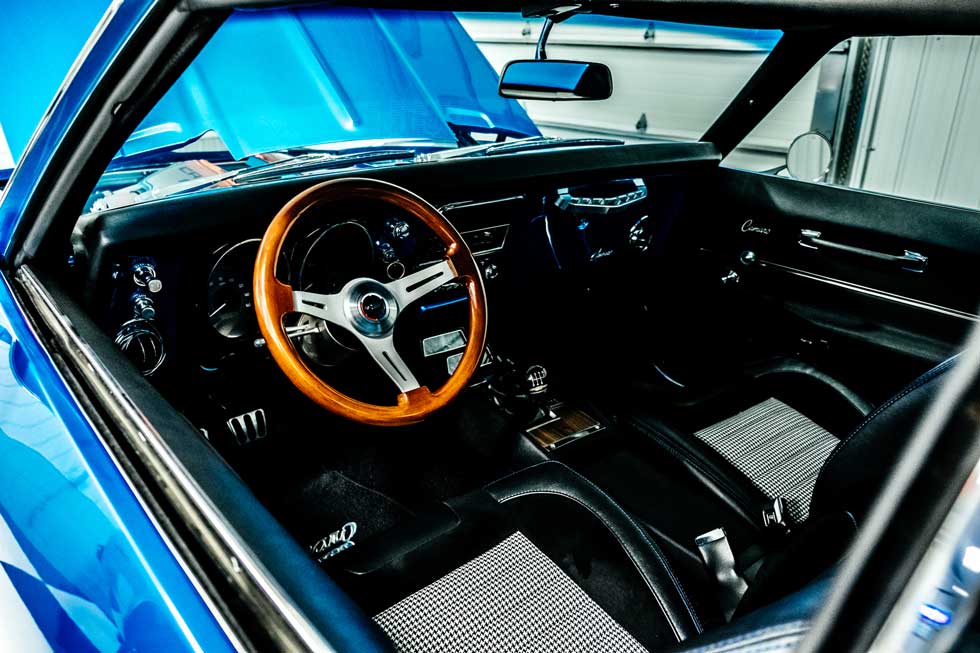Services
When you have made the decision to bring your car to Paradise Garage, documentation begins immediately. A photographic record is created showing the vehicle’s “fit & finish”, areas exhibiting prior body damage & decay, as well as the overall condition of all major mechanical and “interior” components. This photographic record takes place prior to any restorative work taking place.
Level of Restoration
Prior to disassembly, damaged panels with poor fit and finish are addressed. “Why doesn’t the hood fit?” It’s best to solve those problems before disassembly, rather than after.
A complete disassembly of the car begins and precedes right down to the frame. During disassembly, documentation continues and parts are photographed, itemized and inventoried. Small parts are “bagged and tagged” showing location and function.
The photographic record is organized by major component categories including: Body, Mechanical, Interior, and Chassis. Sub-categories further refine the organization of the photographs and records. Every item or part is stored in an organized manner largely eliminating the potential difficulties of lost or misplaced parts.
Without a doubt, extreme care is taken during disassembly to prevent damage to rare, original parts and hardware.
After disassembly, we are ready to begin the restoration process.
The term “progress documentation” is used to explain that we document (using photographs and narratives) the step-by-step progress within the entire restoration process. We do so because, at the end of each day’s activities, customers are easily assured that only quality, comprehensive work has been done. The evidence is an in-depth file of photographs and narrative information available to each customer. Communication is key.
Philosophically, it is important to mention that no minor details are assumed within our restoration process. Everything is important and everything receives the attention needed to assure complete project integrity.
Time and Materials Tracking & Narrative Records
Progress documentation tracks the actual time spent each day on a vehicle through the use of a time clock and a job card. The job card lists the client name, and the date range of the work performed on your vehicle, and as work is completed, our personnel punch in and punch out times appear on the job card. Coupled with the time clock record is a narrative description of the specific work performed corresponding to the actual time spent on that task.
The same is true of all materials consumed on each project. Both time and materials used are logged into each project’s master record. These records are quantified and attached to each invoice released to a customer around each month.
Restoration Workflow
The restoration of all “body” parts requires that each metal part be meticulously stripped of old paint and corrosion. When necessary, deeply rusted and corroded metal is replaced with replacement panels purchased from outside sources OR panels are internally fabricated when replacement panels are not available from our trusted sources.
From a practical perspective, our restoration methodology assures that each panel has structural integrity. We do not practice any quick “cover ups” that temporarily hide the underlying corrosion damage while ensuring more expensive secondary repairs down the road.
Our methodologies take advantage of state-of-art materials that provide protection to the base metal for years to come.

Chassis & Engine
The restoration of all chassis components & engine parts requires that each engine part be restored to achieve a performance level equaling its original, design function. Every individual chassis component is completely disassembled, cleaned, inspected and re-assembled with new parts thereby replacing parts with worn or broken surfaces. When practical, up-grades in part materials are used to provide superior performance and durability.
Post-restoration testing of the re-assembled engine, transmission and chassis is accomplished through proper break-in procedures of newly rebuilt mechanical components, as well as in- motion driving to validate the functionality of the transmission and chassis. This initial testing is done before the vehicle’s body is re-attached to the frame. Additional testing is done after the vehicle has been totally re-assembled. At all test stages, fine-tuning is often required to meet our final calibration standards.

Interior Components
The restoration of all “interior” components like seats, door panels, arm rests, window frames, sun visors, headliner, dash board, floor covering, etc. come from either high quality “kits” or through custom sewing. The replacement fabrics used will be authentic reproductions of the original fabrics.
This portion of the restoration process is, of itself, a “specialty” service requiring craftsmanship bordering on an art form. We have established a partnership with a local source
At this point in our presentation, we have detailed our restoration philosophies, practices and workflows. We hope that you have perceived the tremendous value in allowing Paradise Garage the opportunity to restore your vehicle
Restoration Agreement
Restoration Philosophy
Scope of Restoration
Amvic License
Parts Planner

